If you work with kids, you know that their attention spans are about as long as mosquito’s hiccup. This can be the cause of a lot of the frustration that stands in the way of great coaches wanting to work with kids during their most impressionable years of physical development.
Since we NEED more great coaches working with our youngest athletes, today I want to share some simple steps to overcome this common communication roadblock so you can get your kids focused and excited to improve.

It’s important to note that young kids want to pay attention to you. It’s just that the brain machinery necessary to make this happen isn’t quite developed yet. The structures in a young athlete’s brain responsible for things like focus and attention don’t fully develop until well into puberty.
Even then, you have to realize that you’re not the only show in town. Distractions, both internal and external, are everywhere.
The good news is that even in this state of mid-development, there are some simple “hacks” coaches can use to stay within a young athlete’s capacity for attention while increasing their desire to focus.
Names
Name recognition is one of the first ways we establish 2-way communication with infants. Kids learn at a very young age that when we call their name, something is about to happen, so they better pay attention.
I had a kinesiology professor in undergrad who would quickly memorize our names and call on us at random during his lectures. I’ve never paid more attention in class.
Learn your athletes’ names AS SOON AS POSSIBLE. Use their first name frequently. Even if they are not directly involved with the drill or activity you are demonstrating, figure out ways to constantly call out names.
If you’re demonstrating an activity: “This is how you dribble a ball with your feet. Ashley, am I kicking it with my toe? Jordan, am I keeping the ball close to me or far away from me?”
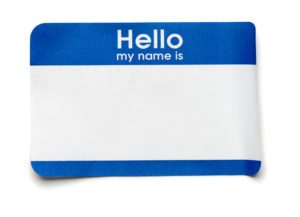
Aside from you knowing and using their names, make sure they know your name as well. Kids are far more vested in someone when they know their name. My 7-year-old daughter has named every bird, cat, dog, and ladybug that comes within a 50-foot radius of our house. Why? Because identifying them by name makes them relevant in her life.
Finally, kids should know each other’s names. Not just on paper. They should feel comfortable quickly calling out to everyone in your training environment. Again, this makes them feel like the situation is relevant and important to them.
Keep it Short, Keep it Moving
Even with “Jedi” level tactics for keeping kids engaged, they can only pay attention for so long. Their capacity for focus and attention is like a reception line at a wedding. They can entertain a quick interaction, but there’s always a long line of other stuff waiting to pay their attention’s respects. We have to keep it moving.
Keep explanations short and active. Kids generally don’t retain auditory information as well as adults, so if you’re standing and talking and they’re sitting and starring, you’re probably not capturing their attention. They respond much better to visual and kinesthetic information. Show them, then have them do it.
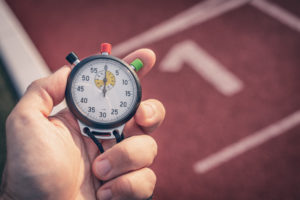 Once they’re engaged in an activity, let them participate for few minutes then re-engage them. Legendary basketball coach John Wooden used to do this with his championship teams at UCLA. He would introduce a drill and have the athletes do it for a few minutes. Before their focus and intensity could wain, he would stop the drill, change it slightly, then go again.
Once they’re engaged in an activity, let them participate for few minutes then re-engage them. Legendary basketball coach John Wooden used to do this with his championship teams at UCLA. He would introduce a drill and have the athletes do it for a few minutes. Before their focus and intensity could wain, he would stop the drill, change it slightly, then go again.
This way, his players couldn’t go into the unfocused, inattentive state of “auto-pilot”.
This could be as simple as changing the tempo (fast, slow, etc.), movement strategy (run, skip, etc.), or any other criteria that impacts that impacts the activity.
Peer Modeling
Humans and other animals have a class of neurons referred to as “mirror neurons” that guide the moderation of an activity based on what is observed from others similar to them. In other words: “Monkey see, Monkey do”.
These mirror neurons are highly active through the most significant years of physical development. You can imagine how important this has been evolutionarily, allowing kids to quickly learn important social and other behaviors.
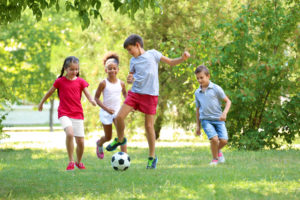
In the context of sports and physical activity, kids see coaches and want to replicate what is demonstrated. However, when other kids demonstrate or evaluate, young athletes naturally respond with a higher level of attention and engagement. After all, kids are more like them!
When you are able to employ kids to lead warm-ups, demonstrate activities, or “teach” skills to partners, you will naturally increase the number of eyes and ears taking in information that can help them develop skills.
Use a “Post”
As I’ve highlighted, young athletes can pay attention. Just not for very long. The good news is that attention can be continually renewed with a coaching tool I call a “post.”
This is a simple strategy where you share a special gesture, word, or sound (whistle, clap) that prompts a specific “response” from the kids. For example, “When I call out “knees!” put your hands on your knees, bend your legs, and look at my nose!”
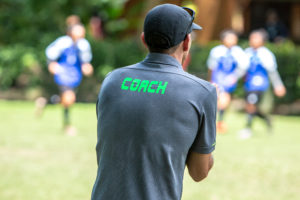
Use this consistent, engrained cue throughout your coaching session. It can be kind of a game, and kids actually get excited about it. Get creative. Don’t just blow a whistle and yell “that means be quiet!” From an attention standpoint, not only does it continually remind them to focus on you, it runs interference on the process of “attentional fatigue.”
Integrate the attention-grabbing coaching “secrets” into your programs and watch your most notorious daisy pickers, butterfly chasers, and space cadets get excited and engaged to move.
What are some of your “tricks” to attain and retain your youngest athlete’s attention? Post in the comments!
Brett Klika CEO and co-founder of SPIDERfit is an international award- winning certified strength and conditioning coach, author, and motivational speaker with over 20 years experience motivating and inspiring youngsters to a life of health, fitness, and performance.
Brett consults with schools, athletic organizations, fitness professionals, and fortune 500 companies around the world.

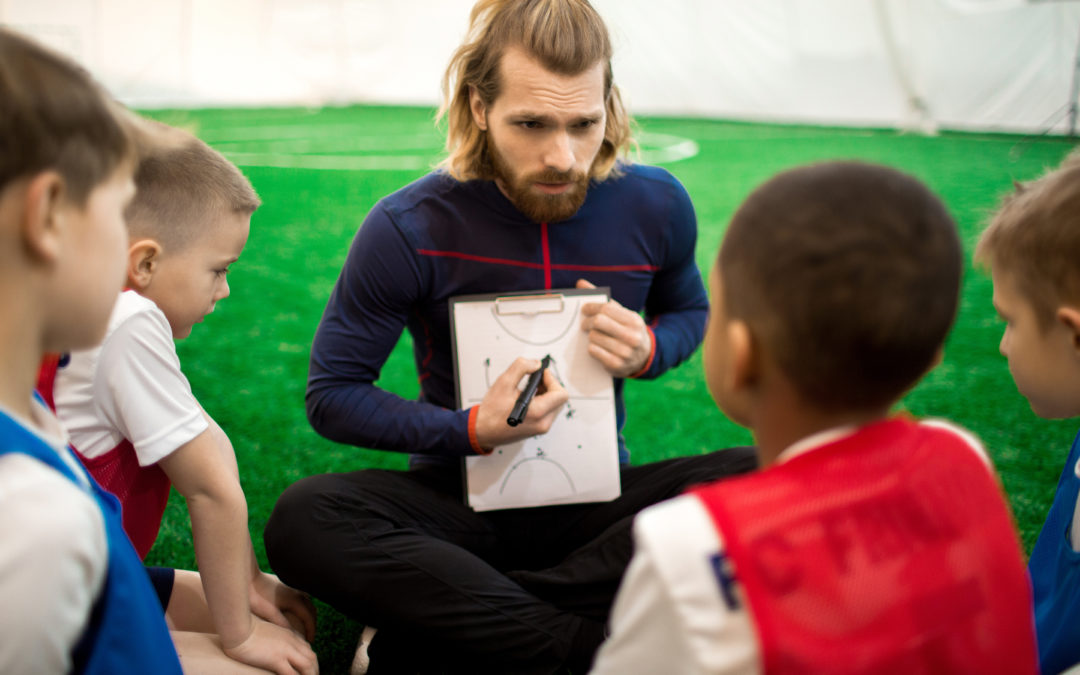



Connect with SPIDERfit!